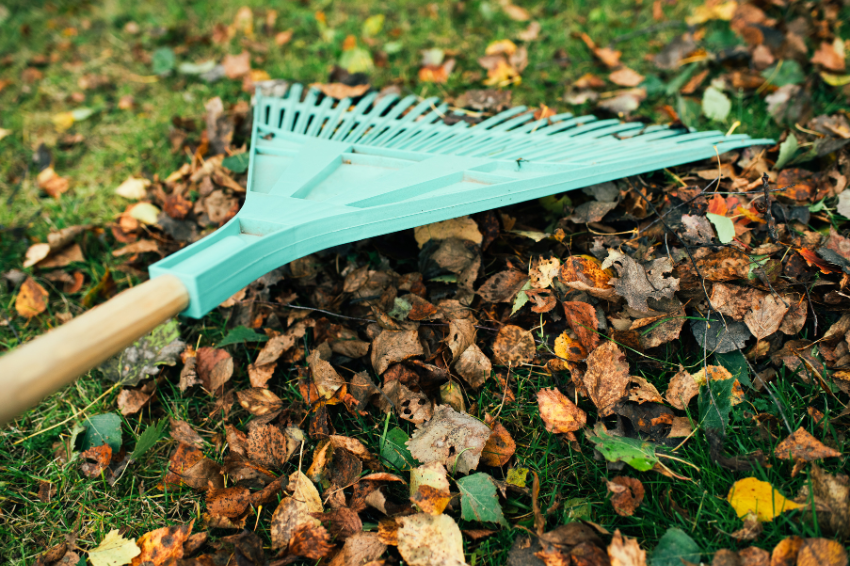As fall sets in, the vibrant greens of summer slowly give way to autumn hues, and the cooler temperatures signal a shift in yard maintenance priorities. Preparing your lawn for the colder months is crucial to ensuring its health and vitality come spring. By focusing on a few essential fall lawn care tasks, homeowners can set the stage for a lush, resilient yard that thrives throughout autumn and rebounds beautifully when warmer weather returns. Here are some steps you can take to get your lawn ready for fall.
1. Rake Leaves and Debris
One of the most important steps in fall lawn care is regular leaf raking. Fallen leaves and debris can suffocate your grass by blocking sunlight and preventing essential nutrients from reaching the soil. While colorful leaves add seasonal charm, leaving them on your lawn for too long can lead to fungal growth and other lawn diseases. Be proactive in keeping your yard clear by raking or using a leaf blower.
Pro Tip: Consider mulching your leaves instead of discarding them. Mulched leaves can decompose and provide organic matter, enriching your soil and reducing the need for additional fertilizer.
2. Apply Fall Fertilizer
Fall is the perfect time to apply fertilizer. As your grass enters a period of slower growth, it’s important to give it the nutrients it needs to strengthen its root system. Applying a slow-release fertilizer rich in phosphorus will promote root development, helping your grass store energy for the winter months. This will not only prepare your lawn for dormancy but also ensure that it bounces back faster and healthier in the spring.
When to Fertilize: Aim to fertilize your lawn in mid-to-late fall, about six weeks before the first frost. This gives the nutrients time to absorb into the soil before freezing temperatures arrive.
3. Adjust Your Watering Schedule
As temperatures drop, your lawn’s water needs change. Overwatering can lead to soggy soil, encouraging fungal diseases, while underwatering can stress the grass, weakening it before winter. The cooler weather means less evaporation, so you can reduce your watering frequency while still maintaining optimal soil moisture.
How to Water: Water in the early morning to minimize evaporation. This allows the water to soak into the ground before the sun gets too warm and reduces the risk of mold that could develop from nighttime moisture.
4. Aerate the Soil
Aeration is another crucial step in preparing your lawn for fall. Over time, the soil can become compacted, making it difficult for nutrients, water, and air to reach the grassroots. Aeration helps by perforating the soil with small holes, improving circulation and nutrient absorption. Fall is an ideal time to aerate, as it allows the lawn to recover before winter sets in.
How to Aerate: You can rent or purchase an aerator from your local garden center, or hire a professional lawn care service. Focus on high-traffic areas where the soil is most compacted.
5. Overseed Thin Areas
After aerating, overseeding is an effective way to thicken up thin or bare patches in your lawn. Cooler temperatures and consistent moisture create the ideal environment for new grass seeds to take root. Choose a seed blend that’s well-suited for your climate and yard conditions, whether it is a cool-season or warm-season grass variety.
Best Time to Overseed: Late summer to early fall is the optimal time to overseed, as it allows the new grass to establish itself before winter.
6. Mow Until the First Frost
As the growing season winds down, you’ll still need to mow your lawn until the first frost. However, you should gradually lower the cutting height of your mower. Cutting the grass too short can stress it, but leaving it too long increases the risk of fungal diseases. Aim for a height of about 2-2.5 inches during the final mow of the season.
Tip for Success: Keep your mower blades sharp to ensure a clean cut, which helps prevent tearing and damage to the grass.
7. Control Weeds
Fall is also an excellent time to tackle weeds before they go to seed. Applying a weed killer in early fall can help you get a head start on weed control for the following year. Weeds like dandelions and clover are still actively growing during this time, so applying a post-emergent herbicide will be most effective.
Herbicide Safety: Always read and follow the label directions for any herbicide you use, and consider eco-friendly options if you’re concerned about chemicals in your yard.
By incorporating these essential tasks into your fall lawn care routine, you can ensure that your yard remains healthy and resilient throughout the cooler months. From raking leaves and adjusting your watering schedule to applying fertilizer and aerating the soil, each step plays a vital role in maintaining a thriving lawn year-round. Take the time now to invest in your lawn’s future, and you’ll reap the rewards of a lush, green landscape come spring.
If you need help with your lawn making the transition to the colder months, Martin John Company’s team of landscaping designers and horticulture experts can help. Schedule a free consultation with one of our experts today.


